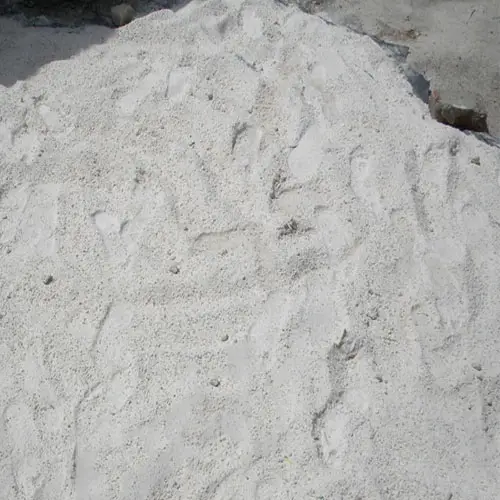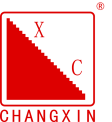In the traditional production process of ductile iron, about 10% of carbon scrap steel is generally used for batching. This article only involves some issues that should be paid special attention to in the production process when increasing the proportion of carbon scrap steel when producing ductile iron in an induction furnace. Based on production practice, the author puts forward his own views for your reference.
1.Selection of silica ramming mass
(1) Scrap steel
The scrap steel used in the production of ductile iron should be carbon scrap steel. It should not contain elements that hinder graphitization, such as chromium. It should not contain anti-spheroidizing alloying elements. About 30% of the scrap steel should be in the form of thick sheets and can be placed flat in the furnace.
(2) Recarburizer
① High-quality coke. It should have a low sulfur content, a block size of 60 to 80 mm, high strength, and should not break after being pounded red hot. ② Waste electrode blocks. It is best to have a certain length to facilitate insertion into the molten iron.
(3) Pig iron
It is mainly used to adjust the carbon content of the molten iron. It is hoped that high-carbon and low-sulfur pig iron with wC>4% can be used. It is better to have a higher silicon content in the pig iron, and less ferrosilicon can be added to produce ductile iron.
(4) Spheroidizing agent and inoculant
It should be used according to traditional processes and in accordance with the actual conditions of each factory.
2.Smelting
Smelting process flow:
Coke block + scrap steel → electrode block → temperature increase → remove coke block and electrode block → sample and analyze carbon content → pig iron → return material → sample and analyze Si, Mn → temperature increase → ferromanganese + ferrosilicon → out of furnace → inoculation + spheroidization → pouring.
The matters needing attention during the smelting process are as follows:
(1) Coke blocks are placed at the bottom of the furnace to create a longer soaking time for the coke blocks in the molten iron. The amount of coke blocks used is about 5% of the scrap steel. When the scrap steel is melted by about 50%, the coke should be covered with thick scrap steel sheets. 60-80 mm scrap electrode blocks can also be used instead of coke to be placed at the bottom of the furnace as a recarburizing agent. The sulfur content is lower and it is more beneficial to obtain high-quality ductile iron.
(2) The proportion of scrap steel used is mainly determined by the recarburizing efficiency. Manufacturers that begin to use this method to produce ductile iron use about 30%. After improving the recarburizing efficiency, gradually increase the proportion of scrap steel used. Excessive use of scrap steel, if the recarburizing efficiency is not high, will affect the carbon-silicon equivalent of the final product.
(3) After the scrap steel is melted, insert the electrode rod to appropriately increase the furnace temperature and improve the recarburizing efficiency. However, if the furnace temperature is too high, it will increase power consumption and is not good for the furnace lining.
(4) After the estimated carbon content is high enough, remove the coke blocks and electrode rods, and take samples to analyze the carbon content.
(5) According to the analysis results, calculate the amount of pig iron to be added and the amount of recycled ductile iron to be used.
(6) According to the estimated silicon content, decide whether the total amount of molten iron can be supplemented with recycled materials.
(7) After the recycled materials are melted, take samples to analyze the content of alloying elements such as Si and Mn.
(8) Appropriately increase the temperature of the molten iron, supplement the alloying elements according to the analysis results, and add ferrosilicon after reaching the furnace discharge temperature before the furnace discharge.
(9) The ferrosilicon is melted to a molten state and immediately discharged from the furnace.
(10) Spheroidization, inoculation, and pouring are carried out as usual.
3.Calculation of ingredient adjustment
As we all know, the mechanical properties of ductile iron mainly depend on chemical composition, cooling rate (cast ductile iron) and heat treatment process. Chemical composition is an internal factor, a fundamental factor, and a variable, which is different in almost every furnace. Therefore, the chemical composition must be tested and adjusted carefully, and it is not appropriate to adopt “fixed ratio production”. Among the chemical compositions, carbon equivalent is particularly important. In particular, for ductile iron produced using scrap steel as the main charge, because the carbonization efficiency is difficult to control and the carbon equivalent fluctuates greatly, special attention should be paid to adjusting the carbon equivalent.
(1) Calculate the amount of pig iron added
Calculate the amount of pig iron added based on the analyzed carbon content. In fact, it is to adjust the carbon equivalent of ductile iron so that the carbon equivalent of the molten metal formed by pig iron and scrap steel reaches the carbon equivalent required by ductile iron.
Pig iron added = scrap steel added × (required carbon content of ductile iron – analyzed carbon content) / (carbon content of pig iron – required carbon content of ductile iron)
(2) Calculate the amount of recycled ductile iron added
The carbon equivalent of recycled ductile iron is basically normal, and the amount added is not large. Therefore, after the recycled iron is added, the carbon content of the entire furnace molten iron is qualified.
Amount of recycled ductile iron added = total charge – amount of scrap steel added – amount of pig iron added
(3) Estimation of silicon content is calculated as follows:
Silicon content ≈ [(scrap steel + pig iron + amount of recycled ductile iron added) × silicon content / total charge] × 100% ≤ allowable silicon content of raw iron
When the estimated silicon content is too high, add an appropriate amount of recycled ductile iron and use pig iron and scrap steel in an equal ratio of 9:1 to make up the total charge.
(4) Calculation of ferrosilicon addition The calculation formula is as follows:
Fersilicon addition = [total charge × (required silicon content of ductile iron – silicon content of inoculation – silicon content of spheroidization – analyzed silicon content)] / silicon content of ferrosilicon
(5) Amount of manganese and other alloying elements The calculation formula is as follows:
Amount of alloy iron added = total charge × (required alloy content of ductile iron – analyzed content) / alloy element content in alloy iron
The above calculations do not include burnout. This is because when melting ductile iron in an induction furnace, the burnout of each element is not significant, and iron also has a certain burnout. If you encounter special circumstances, you should pay attention to the burnout.
Example of composition adjustment application:
Use 1t induction furnace to produce pearlite ductile iron QT800-2, with a casting weight of 1000kg.
Controlled chemical composition: wC=3.5%, wSi=2.5%, wMn=0.5%, wP<0.07%, wS<0.02%, wMg=0.03%~0.06%, wRE=0.02%~0.04%.
Example of composition adjustment application:
Use 1t induction furnace to produce pearlite ductile iron QT800-2, with a casting weight of 1000kg.
Controlled chemical composition: wC=3.5%, wSi=2.5%, wMn=0.5%, wP<0.07%, wS<0.02%, wMg=0.03%~0.06%, wRE=0.02%~0.04%.
After carbonization, the carbon content of “scrap steel liquid” in the furnace is 2.5%.
Pig iron addition = 300 × (3.5% – 2.5%) / (4% – 3.5%) = 600 (kg)
Use of recycled ductile iron = 1000-300-600 = 100 (kg)
Estimated silicon content = (300 × 0.3% + 600 × 1.8% + 100 × 2.5%) × 100% = 1.42%
If the silicon content of the spheroidizer is 0.6% and the silicon content of the inoculant is 0.4%, the silicon content of the original iron liquid should be 1.5%, which is higher than the estimated silicon content. For this, Z18 cast iron can be used to adjust the carbon equivalent, and recycled ductile iron can be used to supplement the total amount of furnace charge.
The silicon content before leaving the furnace is 1.38%, and the manganese content is 0.15%.
Ferrosilicon addition amount = [1000 (2.5% – 0.6% – 0.4% – 1.38%)] / 75% = 1.6kg
Ferromanganese addition amount = [1000 (0.5% – 0.15%)] / 65% = 5.4kg

